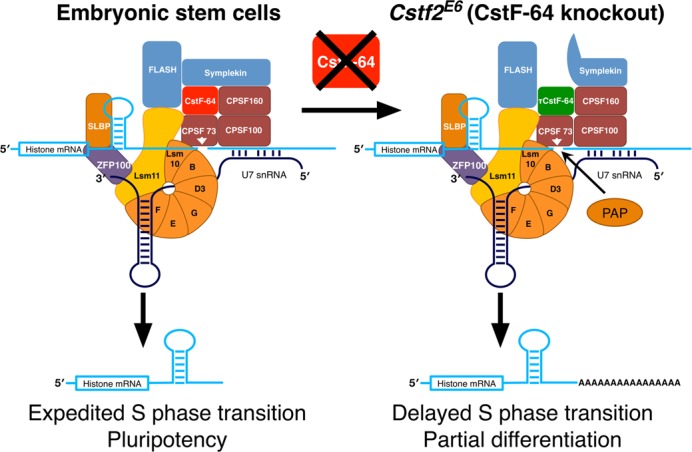Figure 7.

Schematic representation of how depletion of CstF-64 increases polyadenylation of replication-dependent histone mRNAs and modulates the cell cycle in ESCs and therefore pluripotency. The panel on the left describes the histone mRNA 3′ end processing complex in wild type ESCs. On the right: modified histone mRNA 3′ end processing complex in the Cstf2E6 (CstF-64 knockout) cells. Histone mRNA cleavage occurs in wild type mouse ESCs due to interactions of the U7 snRNP with the histone mRNA downstream element (left panel). Other proteins involved in mRNA polyadenylation further associate with the complex, including CstF-64 and symplekin. The complex promotes site-specific cleavage of the histone mRNA by CPSF-73. Together, these processes correlate with normal entry into S-phase and pluripotency. In normal ESCs, a small amount of these cleaved transcripts are polyadenylated. In Cstf2E6 cells (right panel), CstF-64 is absent, resulting in recruitment of τCstF-64 to the histone 3′ end processing complex (although τCstF-64 interacts more poorly with symplekin). This results in an increase in polyadenylation of the cleaved histone transcripts, presumably by poly(A) polymerase (PAP).
